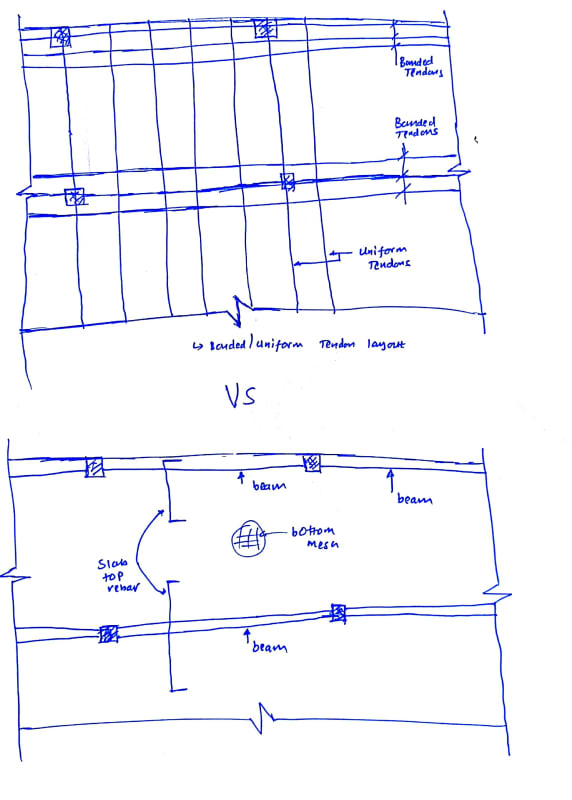After reading multiple responses about how the banded/uniform tendon layout doesn't perform well under service conditions since the elastic moment distribution tends to prefer column/middle strip arrangement, I decided to start this tread with an ugly sketch attached.
If, for whatever span and column arrangement stiff beams are provided on column center line in one direction and the other is free from beams, the slab would tend to act as one way slab supported on beams(correct me if am wrong) and if it is reinforced following this one way action, then service issue won't there.
If we agree on the above statement, then I would say the banded tendons would act as a strong band in conventional RC system creating a hidden beam and the uniform tendons acting as rebar taking care of cracking issues. And the argued cracking won't be a problem...this is how I see it,please correct me if am wrong.
The other thing we must not forgot is that the code is asking the top rebar around columns to be placed within 1.5h, which is a very small region and it would tend to take care the cracking associated with high moments that are being transferred to the column

If, for whatever span and column arrangement stiff beams are provided on column center line in one direction and the other is free from beams, the slab would tend to act as one way slab supported on beams(correct me if am wrong) and if it is reinforced following this one way action, then service issue won't there.
If we agree on the above statement, then I would say the banded tendons would act as a strong band in conventional RC system creating a hidden beam and the uniform tendons acting as rebar taking care of cracking issues. And the argued cracking won't be a problem...this is how I see it,please correct me if am wrong.
The other thing we must not forgot is that the code is asking the top rebar around columns to be placed within 1.5h, which is a very small region and it would tend to take care the cracking associated with high moments that are being transferred to the column

